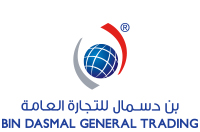Commercial kitchens are bustling hubs of culinary creativity, but they also present unique fire hazards. The buildup of grease in kitchen exhaust systems can lead to catastrophic fires. That’s where grease duct wrap material comes into play. This crucial component acts as a barrier, protecting against the spread of flames and heat. Let’s see how proper grease duct installation and regular inspections can help in maintaining fire safety.
Grease ducts wrap material, often made of fire-resistant materials like ceramic fiber, plays a pivotal role in commercial kitchen safety. It is made to be fitted around the ductwork that sends hot, greasy air outside from the kitchen. This substance serves as a firestop in the event of a fire, keeping the heat and flames contained inside the duct and preventing them from spreading to other areas of the building.
Installation of grease duct wrap material
- Before starting the installation process, it is crucial to ensure the workspace is safe. This includes shutting off the exhaust system, cleaning the ductwork, and removing any existing insulation or wrap material.
- Choose a grease duct wrap material that is compliant with local fire safety regulations and the specific requirements of your kitchen exhaust system. Consult with a fire safety professional or refer to your local building codes for guidance.
- Measure the duct’s circumference and cut the grease duct wrap material accordingly. Make sure it fits snugly around the duct, with no gaps or overlaps.
- Pay special attention to the joints and seams of the material. These are potential weak points where flames and heat can escape. Use a high-temperature sealant to seal any gaps or seams securely.
- Secure the grease duct wrap material to the duct using approved mechanical fasteners or hangers. Follow the manufacturer’s instructions and local building codes for guidance on the appropriate attachment method.
Regular inspections and maintenance
The installation of grease duct wrap material is just the first step in ensuring fire safety in commercial kitchens. Regular inspections and maintenance are equally crucial. Here’s what you need to know:
- Establish a routine inspection schedule, typically conducted annually or as required by local regulations. During these inspections, a qualified technician will examine the condition of the grease duct wrap material, looking for signs of wear, damage, or deterioration.
- Grease buildup on the exterior of the duct can pose a fire hazard. Regular cleaning of the ductwork, as well as the grease duct wrap material, is essential to prevent the accumulation of flammable residues.
- If any damage or wear is detected during inspections, immediate repairs or replacements are necessary. Damaged grease duct wrap material cannot effectively contain a fire and must be addressed promptly to maintain fire safety.
- Maintain thorough records of all inspections, repairs, and maintenance activities. This documentation is not only important for compliance but also for ensuring a comprehensive history of the grease duct system’s condition.
The installation and inspection of grease duct wrap material are vital components of fire safety in commercial kitchens. Neglecting these essential steps can lead to catastrophic fires, putting lives and property at risk. By selecting the right material, following proper grease duct installation procedures, and conducting regular inspections and maintenance, you can mitigate the risks associated with grease buildup in kitchen exhaust systems, ensuring a safer environment for both staff and patrons.
Tags: grease duct installationCategorised in: General, grease duct installation
This post was written by Bin Dasmal General Trading


Comments are closed here.